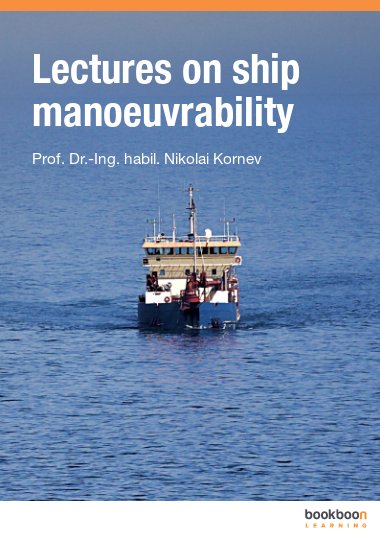This book is written on the base of a lecture course taught by the author at the Faculty of Mechanical Engineering and Marine Technology at the Rostock University in Germany. The course contains fourteen lectures which include main principles of ship manoeuvrability. Experimental, theoretical and numerical methods used in the ship theory are presented in a clear and simple form. Each chapter is supplied with exercises which can be solved either analytically or using software provided by the author. An optional chapter is devoted to wing in ground effect dynamics. The only prerequisite for the course is the knowledge of general fluid dynamics.

الوصف
المحتوى
- List of Tables
- List of Figures
- General differential equations of ship dynamics
- Ship motion equations in the inertial reference system
- Ship motion equations in the ship-fixed reference system
- Ship motion equations in the ship-fixed coordinates with principle axes
- Forces and moments arising from acceleration through the water
- Exercises
- Equations of ship manoeuvring with three degree of freedom
- Coordinate system
- Aims of the ship manoeuvring theory
- Main assumptions of the theory
- Equations in the ship-fixed coordinates with principle axes
- Munk moment
- Equations in terms of the drift angle and trajectory curvature
- Exercises
- Determination of added mass
- General solution
- Added mass of the slender body
- Added mass of the slender body at small Fn numbers
- Exercises
- Steady manoeuvring forces
- Introduction
- Representation of forces
- Experimental determination of steady manoeuvring forces
- Exercises
- Calculation of steady manoeuvring forces using slender body theory
- Force distribution on the slender body in the potential flow
- Improvement of the slender body theory. Kutta condition
- Exercises
- Forces on ship rudders
- Introduction
- General representation of forces on the rudder
- Determination of the force coefficients
- Interaction between the rudder and propeller
- Exercises
- Transversal forces and yaw moment on propeller
- Additional transversal forces on propeller due to non-uniformity of the ship wake
- Additional transversal forces on propeller due to oblique flow
- Moment on the propeller due to upward oblique flow at the propeller location
- Additional moments on the propeller during manoeuvring
- Additional lateral force on the hull caused by propeller
- Exercise
- Yaw stability
- Introduction
- Linearization of the motion equations
- Evolution of perturbations
- Criterion of the stability
- Influence of ship geometric parameters on the stability
- Trajectory of a stable ship after perturbation
- Steady ship motion in turning circle
- Regulation of the stability
- Exercises
- Manoeuvrability Diagram. Experimental study of the manoeuvrability
- Stability at large drift angle and large angular velocity
- Diagram Ω – β
- Manoeuvrability diagram
- Experimental manoeuvring tests
- Exercises
- Influence of different factors on the manoeuvrability
- Influence of the seaway
- Shallow water effect
- Influence of the wall on a mooring ship
- Influence of the inclined wall or of inclined bottom
- Control questions
- Application of computational fluid dynamics for manoeuvrability problems
- Introduction
- Basic Equations
- Computational grids
- Exercises
- Dynamics and Stability of Wing in ground effect craft (WIG)
- Introduction
- Criterion of the static stability of WIG craft and hydrofoils
- Basic nomenclature and indices used in WIG dynamics theory
- Representation of forces in WIG aerodynamics
- WIG motion equations
- Exercises
- Bibliography
- Appendix A Theory of irrotational flow
- Appendix B Mirror principle
- Endnotes
- Index